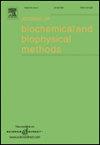Protective action of bacterial melanin against DNA damage in full UV spectrums by a sensitive plasmid-based noncellular system
Abstract
The purpose of this study was to introduce a simple and sensitive plasmid-based noncellular system to evaluate the photoprotection of bacterial melanin on DNA damage against ultraviolet (UV) radiation. Plasmid DNA was used to assess the role of melanin in different ranges of UV using a series of in vitro assays. Fluorometric measurements suggested that melanin could efficiently scavenge reactive oxygen species (ROS) generated by UVA irradiation in solution, and the scavenging capability was proportional to the pigment concentration. The protective effect of melanin on plasmid DNA under UVB irradiation was confirmed by the transformation efficiency of the protected DNA, which was at least 10-fold higher than that of the non melanin protected DNA. After the UVC irradiation, the DNA damage of strand breaks was quantified by laser-induced fluorescence capillary electrophoresis. The percentage of supercoiled plasmid was reduced from 80% to less than 5% without melanin protection. In contrast, the percentage of supercoiled DNA only decreased to about 40% in the presence of melanin under the same radiation conditions. All these results demonstrated that bacterial melanin did protect DNA from being damaged throughout full UV irradiation. This system, avoiding the potential interference by cellular DNA repair machinery and intracellular substances, may provide a sensitive in vitro means to evaluate the functions of melanin and other photoprotective compounds from different sources.

 求助内容:
求助内容: 应助结果提醒方式:
应助结果提醒方式:


